Vulcanian EruptionsAfter intervals of 5 to 10 hours, the active vent stopped erupting for 5 to 15 minutes. This probably caused some solidification of the viscous magma within the conduit, but then triggered powerful vulcanian eruptions which re-openend the vent. The first sequence of six photos below were taken within exactly two minutes at noon of 23 November. It shows the typical development of such a major eruption. Shots like cannon fire cause discomfort to our ears. At night, the vulcanian eruptions were less spectacular than in daylight, as bombs were less hot and only dull red. |
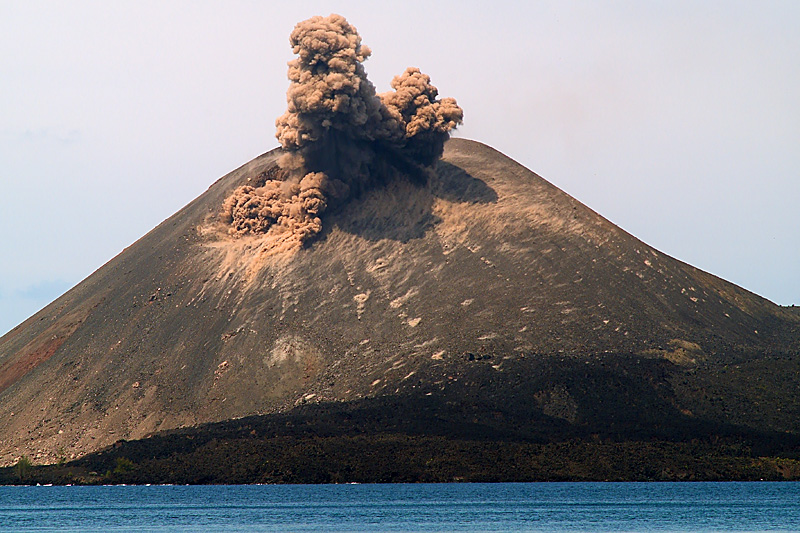 Onset of a vulcanian sequence with a minor blast; blocks falling on the eastern flank of the cone. | 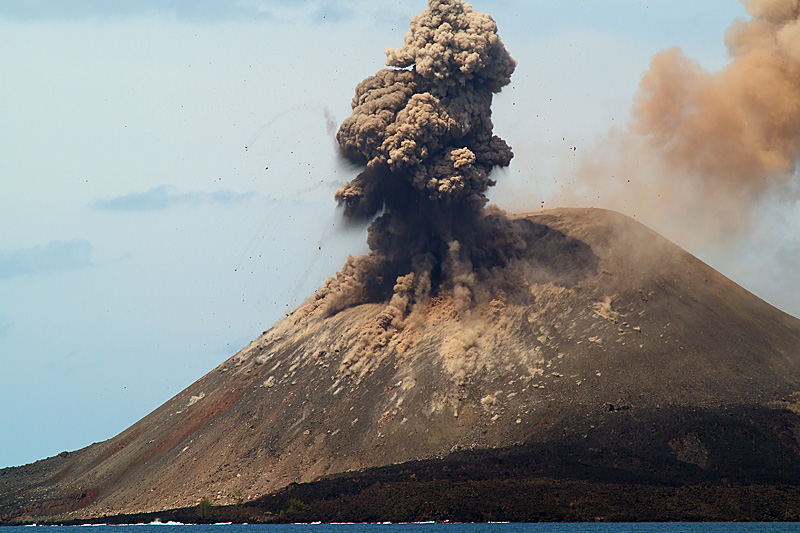 After fifty seconds, the big blast begins: the sky is full of black "dots" which, in reality, are major bombs. | 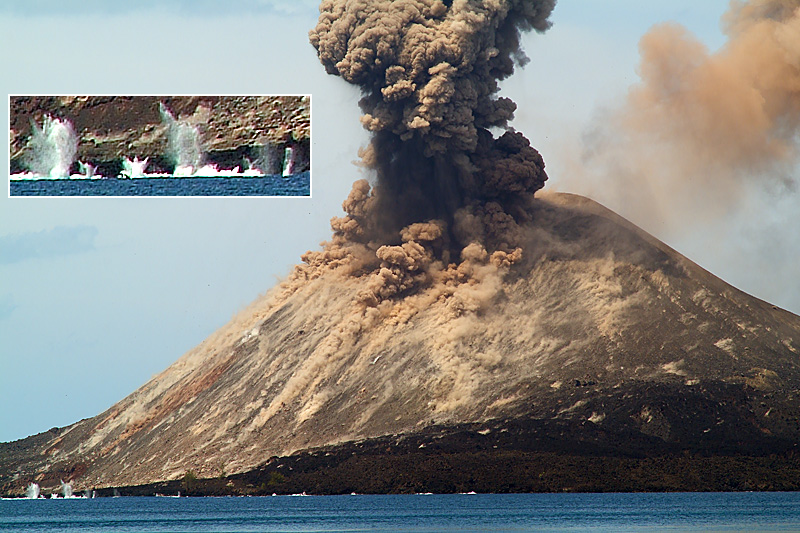 Bombs start to impact everywhere on the slopes, and many fall into the sea (see enlargement). | 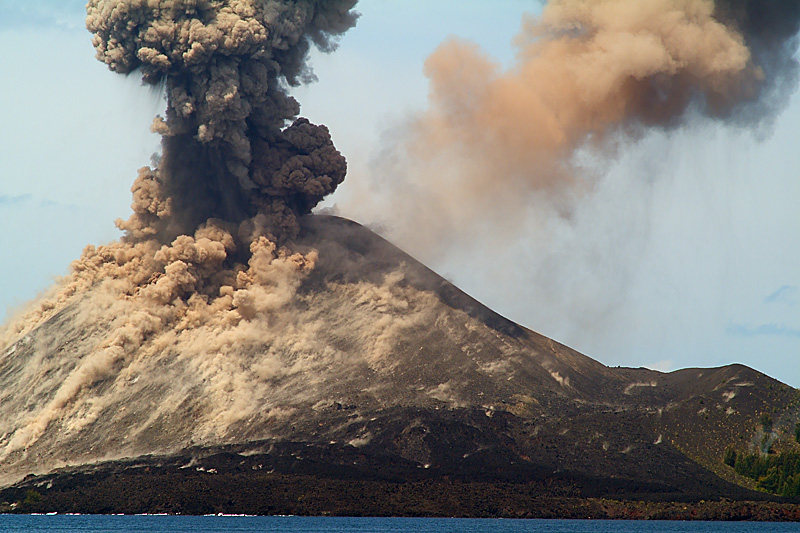 The eastern rim of the old crater we visited only a few hours previously (right) is also reached by dozens of bombs. |
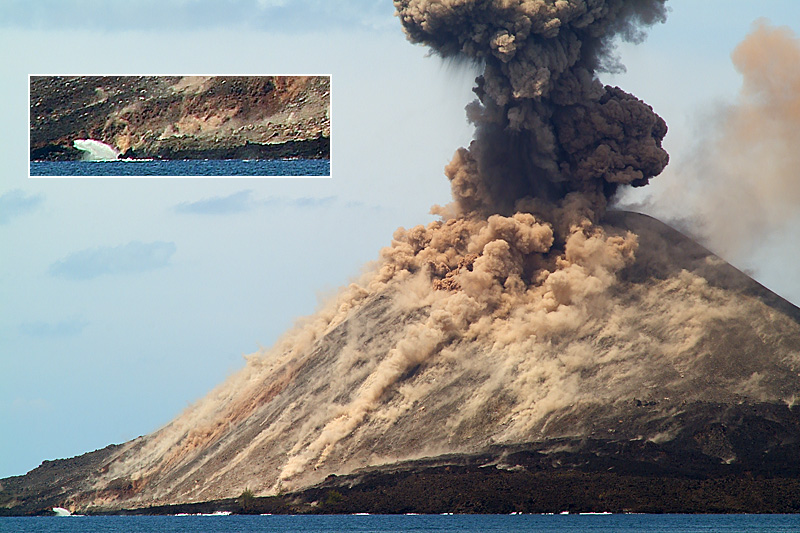 The whole western slope is obscured by pyroclastic flows and rockfalls which reach the sea (see enlargement). | 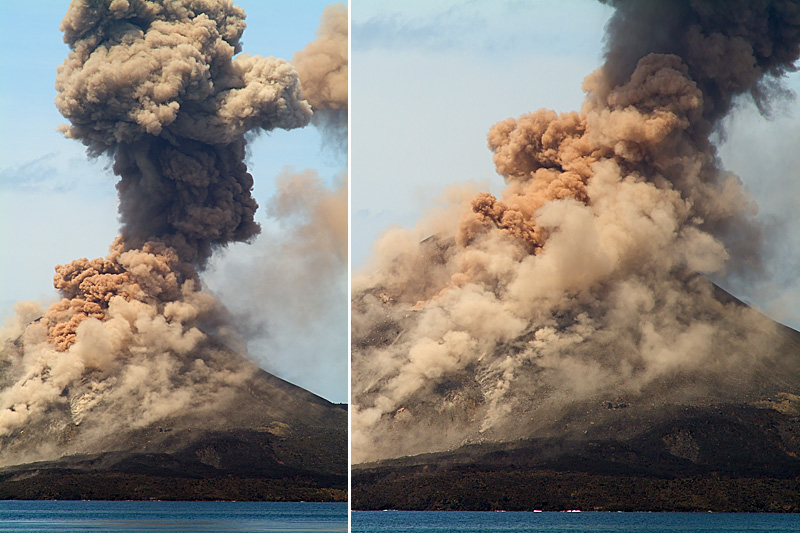 An impressive mushroom cloud stands high above the cone, while rocks continue to fall and roll down the slope. | 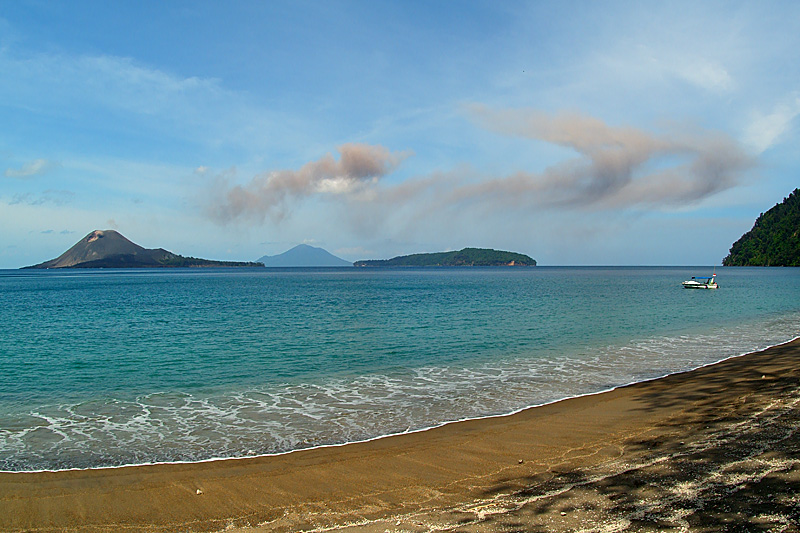 After ten minutes, two ash columns have reached the upper troposphere and slowly drift east. | 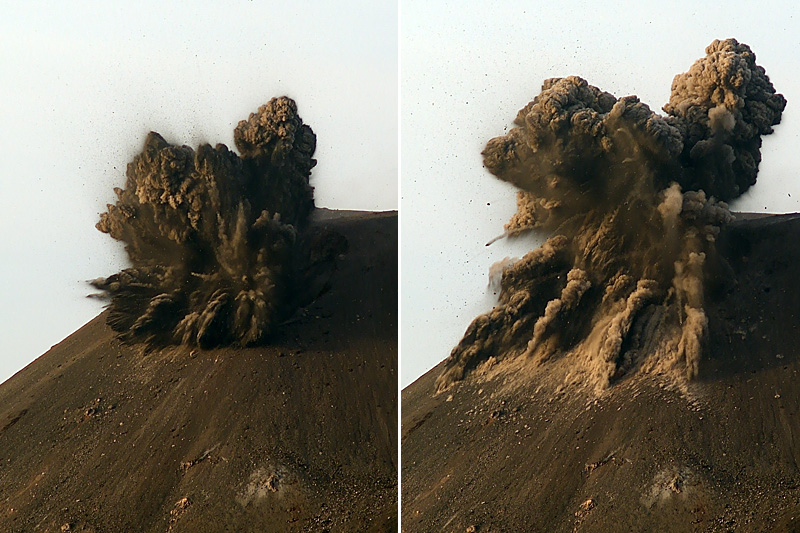 Another, smaller, vulcanian eruption as seen in the warm lights during sunset on 23 November. |
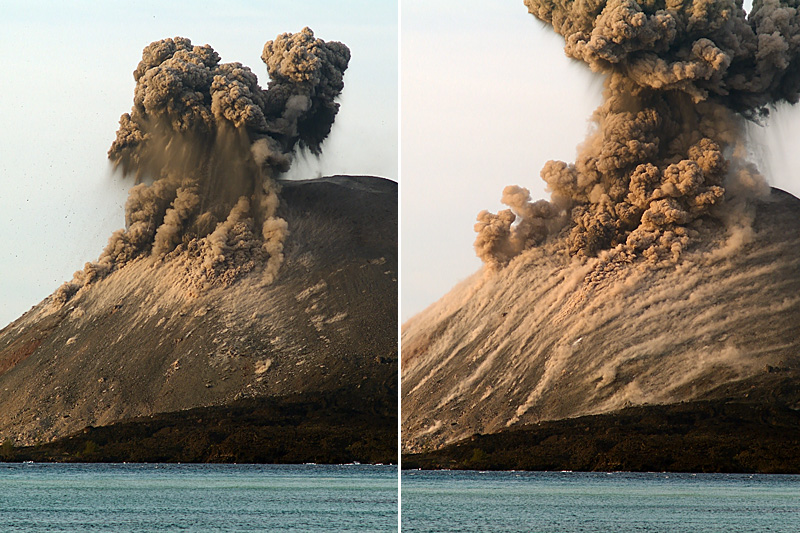 Rockfalls and development of a mushroom-shaped ash column. Note dozens of bombs in the sky at left. | 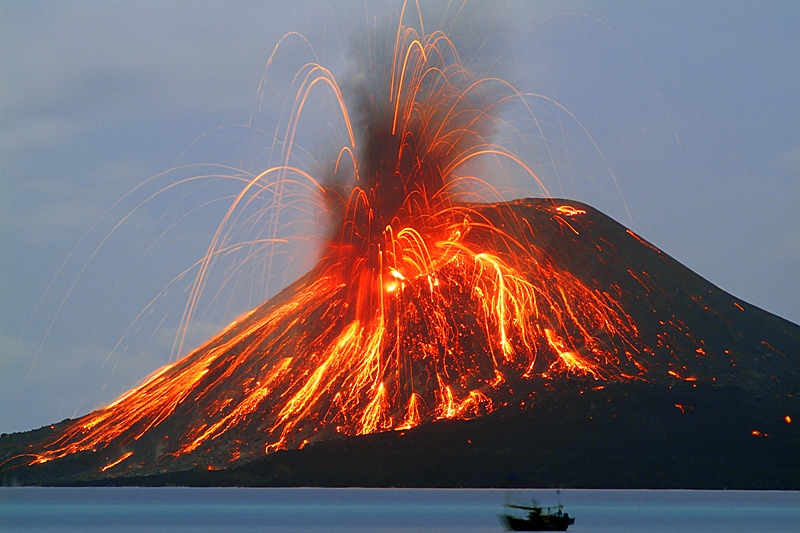 A vulcanian blast at about 11pm on 24 November: note one bomb plunging into the sea at lower left. | 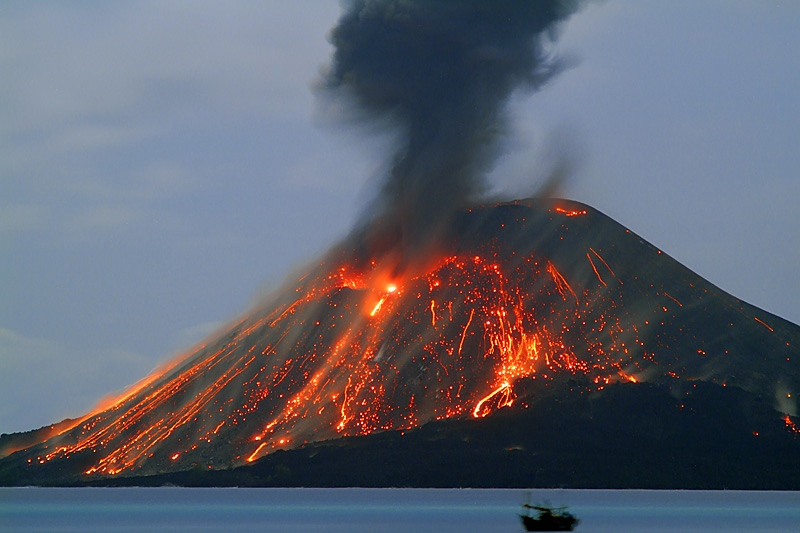 Half a minute after the explosion, dust from impacts starts to obscure the cone; bush-fires start on the right. | 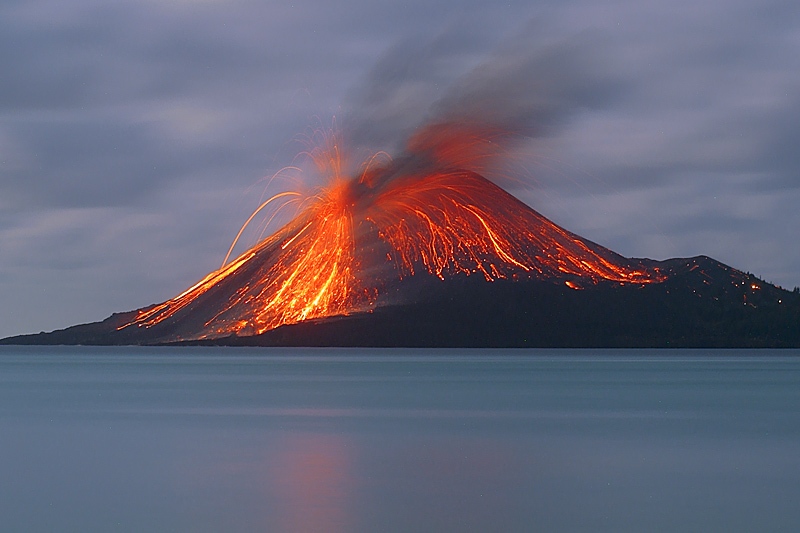 Another big blast at about 3am on 24 November: dozens of impacts on the former eastern crater rim (right). |
| Photos by Marco Fulle, taken from Rakata Island on 23 and 24 Nov 2007, about 5 km SSE of Anak Krakatau. Photos taken with 16mm, 50mm and 135mm lenses and digicam (to be multiplied by 1.5 to obtain the equivalent focal length on 24x36 film). |